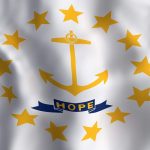
Sovereignty Day in Iceland
Observed annually in Iceland, Sovereignty Day is a holiday that falls on December 1st. Although June 17th is the day on which most Icelanders celebrate their country’s independence, this holiday is also one that’s worth discussing.
Also known as Icelandic Sovereignty Day, this holiday commemorates the date in 1918 when Iceland transitioned from being a colony to a fully sovereign state in a union with the Danish Crown. This is when the country changed its name to the Kingdom of Iceland. Of course, this was only the first step towards independence, and Iceland wouldn’t achieve full independence until June 17th, 1944.
The History of Sovereignty Day in Iceland
Under the Danish-Iceland Act of Union established on December 1, 1918, Iceland transitioned from being a colony of the Danish Crown to being a sovereign state. However, this agreement was only a temporary one and was set to come up for review in 1940.
In April of 1940, the Nazis invaded Denmark, and ties between Denmark and Iceland were severed. Iceland chose to remain neutral, but that neutrality ended abruptly when British forces occupied the country in May of that year. In December of 1943, the agreement between Denmark and Iceland officially expired, and Iceland moved towards independence. On June 17th, 1944, Iceland became an independent republic.
Interesting Facts About Iceland
Below are some cool facts about Iceland that people living outside of the country might not know.
- Approximately 60% of Iceland’s population lives in Reykjavik—the country’s capital city.
- Iceland was the last place on Earth to be settled by humans.
- Hot springs can be found all over Iceland, heated by volcanic activity.
Observing Sovereignty Day
Sovereignty Day doesn’t receive as much attention as Independence Day and isn’t an official holiday. While it does commemorate Iceland becoming a sovereign state of the Danish Crown instead of a colony, it wouldn’t be until 1944 that true Icelandic independence would be obtained.








